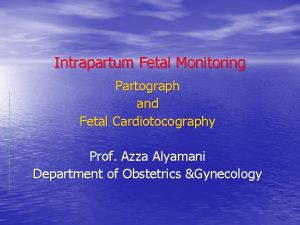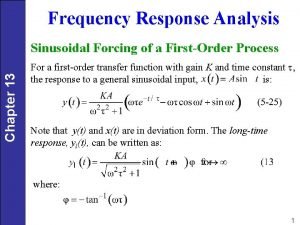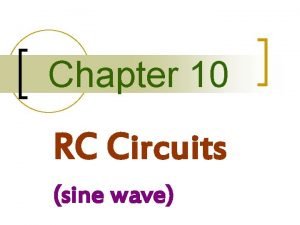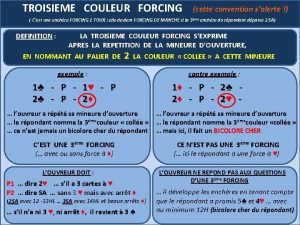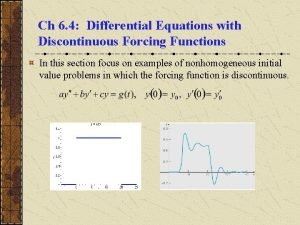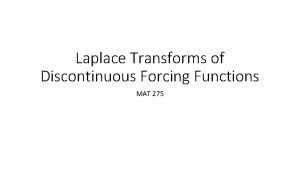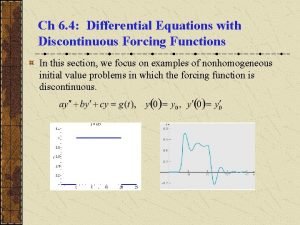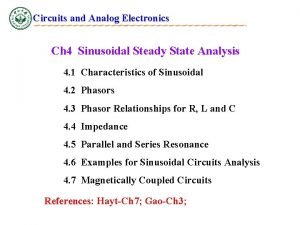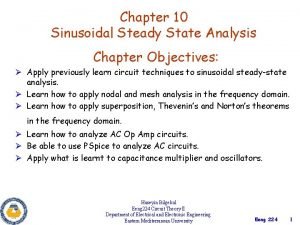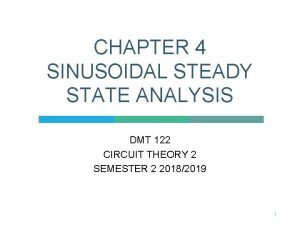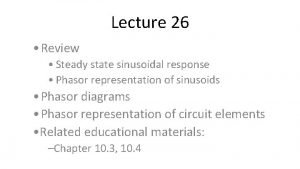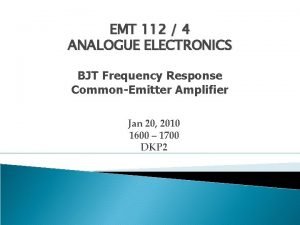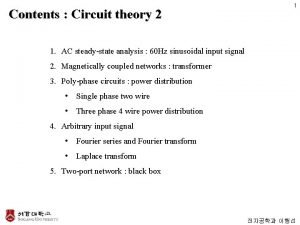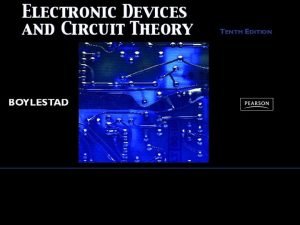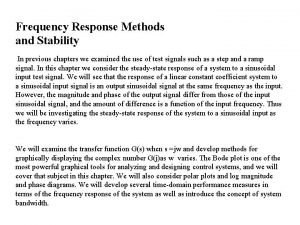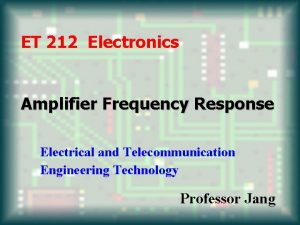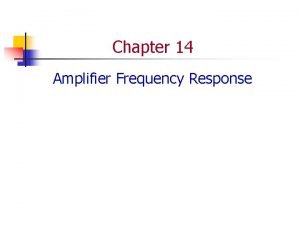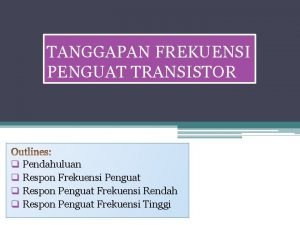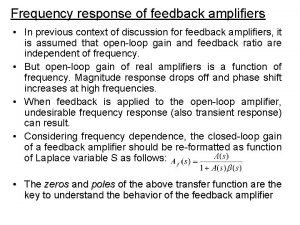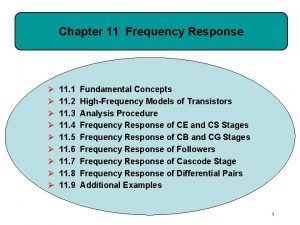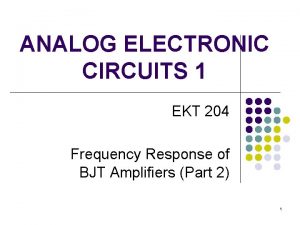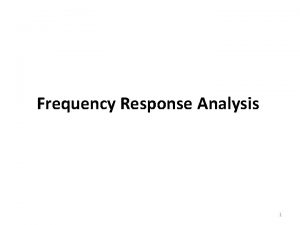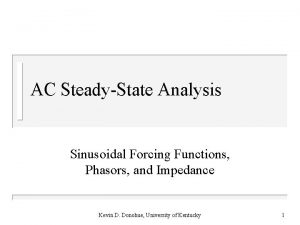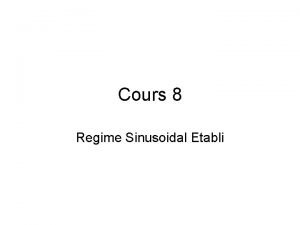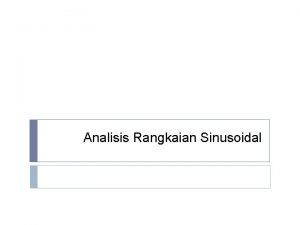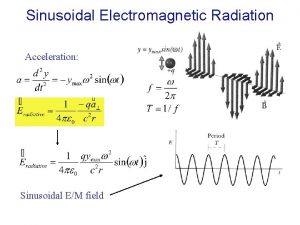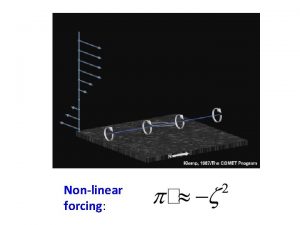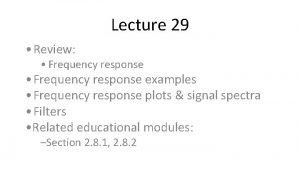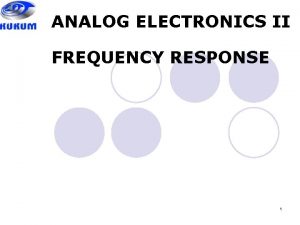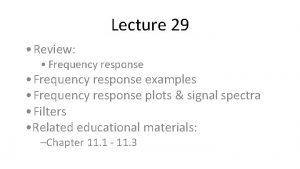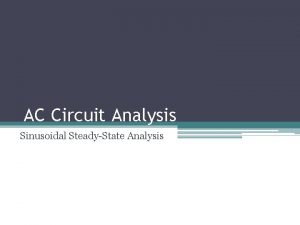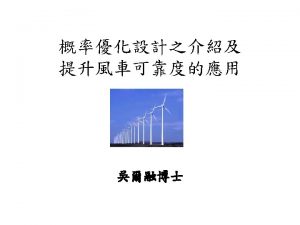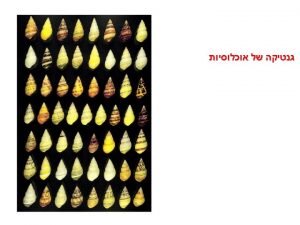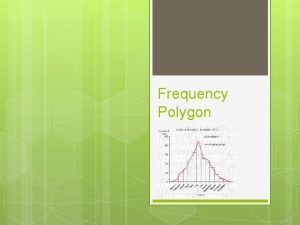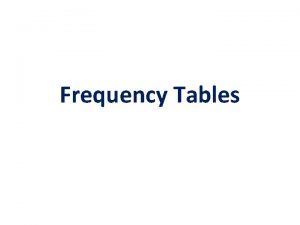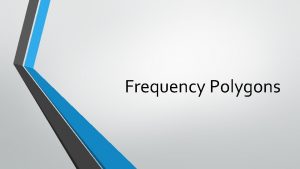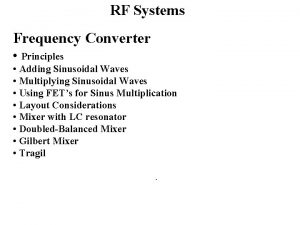Frequency Response Analysis Chapter 13 Sinusoidal Forcing of
































- Slides: 32

Frequency Response Analysis Chapter 13 Sinusoidal Forcing of a First-Order Process For a first-order transfer function with gain K and time constant , the response to a general sinusoidal input, is: Note that y(t) and x(t) are in deviation form. The long-time response, yl(t), can be written as: where: 1

2 Chapter 13

Chapter 13 Figure 13. 1 Attenuation and time shift between input and output sine waves (K= 1). The phase angle of the output signal is given by , where is the (period) shift and P is the period of oscillation. 3

Chapter 13 Frequency Response Characteristics of a First-Order Process 1. The output signal is a sinusoid that has the same frequency, w, as the input. signal, x(t) =Asinwt. 2. The amplitude of the output signal, , is a function of the frequency w and the input amplitude, A: 3. The output has a phase shift, φ, relative to the input. The amount of phase shift depends on w. 4

Chapter 13 Dividing both sides of (13 -2) by the input signal amplitude A yields the amplitude ratio (AR) which can, in turn, be divided by the process gain to yield the normalized amplitude ratio (ARN) 5

Shortcut Method for Finding the Frequency Response Chapter 13 The shortcut method consists of the following steps: Step 1. Set s=jw in G(s) to obtain . Step 2. Rationalize G(jw); We want to express it in the form. G(jw)=R + j. I where R and I are functions of w. Simplify G(jw) by multiplying the numerator and denominator by the complex conjugate of the denominator. Step 3. The amplitude ratio and phase angle of G(s) are given by: Memorize 6

Example 13. 1 Chapter 13 Find the frequency response of a first-order system, with Solution First, substitute in the transfer function Then multiply both numerator and denominator by the complex conjugate of the denominator, that is, 7

Chapter 13 where: From Step 3 of the Shortcut Method, or Also, 8

Complex Transfer Functions Chapter 13 Consider a complex transfer G(s), Substitute s=jw, From complex variable theory, we can express the magnitude and angle of as follows: 9

Chapter 13 Bode Diagrams • A special graph, called the Bode diagram or Bode plot, provides a convenient display of the frequency response characteristics of a transfer function model. It consists of plots of AR and as a function of w. • Ordinarily, w is expressed in units of radians/time. Bode Plot of a First-order System Recall: 10

Chapter 13 break frequency or corner frequency Figure 13. 2 Bode diagram for a first-order process. 11

Chapter 13 • Note that the asymptotes intersect at , known as the break frequency or corner frequency. Here the value of ARN from (13 -21) is: • Some books and software defined AR differently, in terms of decibels. The amplitude ratio in decibels ARd is defined as 12

13 Chapter 13

14 Chapter 13

Integrating Elements Chapter 13 The transfer function for an integrating element was given in Chapter 5: Second-Order Process A general transfer function that describes any underdamped, critically damped, or overdamped second-order system is 15

and rearranging yields: Chapter 13 Substituting Figure 13. 3 Bode diagrams for second-order processes. 16

Time Delay Chapter 13 Its frequency response characteristics can be obtained by substituting , which can be written in rational form by substitution of the Euler identity, From (13 -54) or 17

Chapter 13 Figure 13. 6 Bode diagram for a time delay, . 18

19 Chapter 13

Chapter 13 Figure 13. 7 Phase angle plots for and for the 1/1 and 2/2 Padé approximations (G 1 is 1/1; G 2 is 2/2). 20

21 Chapter 13

Process Zeros Chapter 13 Consider a process zero term, Substituting s=jw gives Thus: Note: In general, a multiplicative constant (e. g. , K) changes the AR by a factor of K without affecting. 22

Chapter 13 Frequency Response Characteristics of Feedback Controllers Proportional Controller. Consider a proportional controller with positive gain In this case , which is independent of w. Therefore, and 23

Chapter 13 Proportional-Integral Controller. A proportional-integral (PI) controller has the transfer function (cf. Eq. 8 -9), Substitute s=jw: Thus, the amplitude ratio and phase angle are: 24

Chapter 13 Figure 13. 9 Bode plot of a PI controller, 25

Chapter 13 Ideal Proportional-Derivative Controller. For the ideal proportional-derivative (PD) controller (cf. Eq. 8 -11) The frequency response characteristics are similar to those of a LHP zero: Proportional-Derivative Controller with Filter. The PD controller is most often realized by the transfer function 26

Chapter 13 Figure 13. 10 Bode plots of an ideal PD controller and a PD controller with derivative filter. Idea: With Derivative Filter: 27

PID Controller Forms Chapter 13 Parallel PID Controller. The simplest form in Ch. 8 is Series PID Controller. The simplest version of the series PID controller is Series PID Controller with a Derivative Filter. 28

Chapter 13 Figure 13. 11 Bode plots of ideal parallel PID controller and series PID controller with derivative filter (α = 1). Idea parallel: Series with Derivative Filter: 29

Nyquist Diagrams Chapter 13 Consider the transfer function with and 30

Chapter 13 Figure 13. 12 The Nyquist diagram for G(s) = 1/(2 s + 1) plotting and 31

Chapter 13 Figure 13. 13 The Nyquist diagram for the transfer function in Example 13. 5: 32
 Partogram interpretation
Partogram interpretation Sinusoidal response of first order system
Sinusoidal response of first order system Sinusoidal response of rc circuit
Sinusoidal response of rc circuit Salerte
Salerte Vegetable forcing
Vegetable forcing Differential equations with discontinuous forcing functions
Differential equations with discontinuous forcing functions Transforms of discontinuous functions
Transforms of discontinuous functions Open center curls produce
Open center curls produce Differential equations with discontinuous forcing functions
Differential equations with discontinuous forcing functions Radiative forcing definition
Radiative forcing definition Sinusoidal steady state analysis of coupled circuits
Sinusoidal steady state analysis of coupled circuits Sinusoidal steady state analysis solved problems
Sinusoidal steady state analysis solved problems Sinusoidal steady state analysis
Sinusoidal steady state analysis Steady state sinusoidal analysis using phasors
Steady state sinusoidal analysis using phasors What is joint relative frequency
What is joint relative frequency How to calculate relative frequency
How to calculate relative frequency Average of sine wave
Average of sine wave Vmax= aw
Vmax= aw Frequency vs relative frequency
Frequency vs relative frequency Marginal frequency table
Marginal frequency table What is a joint relative frequency
What is a joint relative frequency Common base frequency response
Common base frequency response Multistage amplifier applications
Multistage amplifier applications Circuit theory 2
Circuit theory 2 Bjt frequency response
Bjt frequency response Frequency response methods and stability
Frequency response methods and stability Frequency response cbe
Frequency response cbe Formula for cutoff frequency
Formula for cutoff frequency High frequency transistor amplifier
High frequency transistor amplifier Frequency response of feedback amplifier
Frequency response of feedback amplifier Source follower frequency response
Source follower frequency response Frequency response cbe
Frequency response cbe Difference between pulse doppler radar and mti radar
Difference between pulse doppler radar and mti radar
